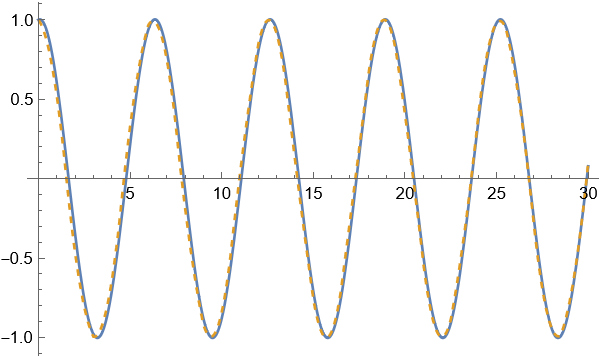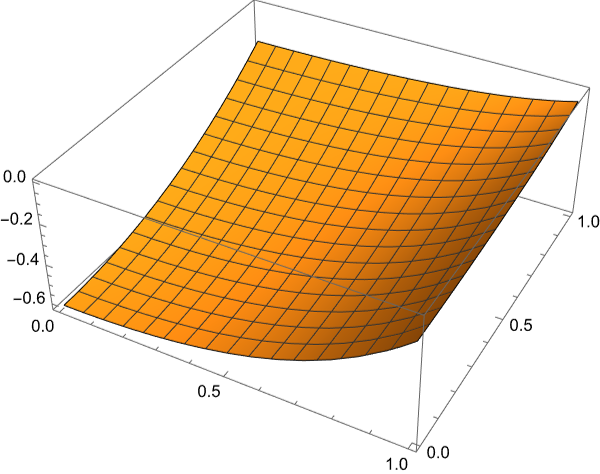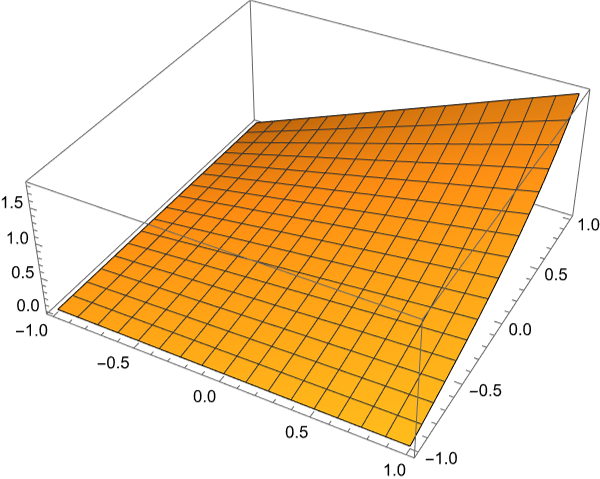The following my (incomplete) attempt.
ClearAll[allowfemdbc];
forcetoeq[sys_] :=
Replace[Flatten@{sys},
expr : Except[_Equal | _DirichletCondition | _PeriodicBoundaryCondition] :> -expr ==
0, {1}];
SetAttributes[allowfemdbc, HoldAll];
allowfemdbc[(head : NDSolve | NDSolveValue | NDEigenvalues | NDEigensystem)[sys_,
depend_, domain : Longest[{_, _, _} ..], n___Integer, rest : OptionsPattern[]],
wrapper_ : Identity] :=
Module[{coordlst, boundLlst, boundRlst, dependvar, bc, bcfem, eq, dbc, bcrest, state,
coefgrad, dim, asso, pde, neumann, dvar, bcpos, bcnew, gpu,
gpuvalue}, {coordlst, boundLlst, boundRlst} = {domain}\[Transpose];
{dependvar} = Flatten@{depend} /. h_ @@ coordlst :> h;
{bc, bcfem, eq} =
Internal`ProcessEquations`SeparateEquations[sys // forcetoeq, coordlst,
dependvar][[2 ;; 4]];
dbc = Cases[bc, a_ /; ! FreeQ[a, Derivative]];
bcrest = Complement[bc, dbc];
state = Quiet[
NDSolve`ProcessEquations[{eq, bcrest, bcfem}, depend, domain, rest][[1]],
NDSolve`ProcessEquations::femibcnd];
coefgrad =
state["FiniteElementData"]["PDECoefficientData"]["DiffusionCoefficients"][[1]] .
Grad[-dependvar @@ coordlst, coordlst];
dim = Length@coordlst;
asso = Association@
Flatten@{Thread[Thread[coordlst == boundLlst] -> -IdentityMatrix[dim]],
Thread[Thread[coordlst == boundRlst] -> IdentityMatrix[dim]]};
pde = NDSolve`FEM`GetInactivePDE[state][[1]];
neumann =
Total@Table[{dvar, bcpos} =
Cases[traditionalbc,
term : Derivative[__][dependvar][a__] :> {term,
And @@ Thread[coordlst == {a}]}, Infinity, 1][[1]];
bcnew = gpu == coefgrad . asso[bcpos] /. Rule @@ bcpos;
gpuvalue = SolveValues[{bcnew, traditionalbc}, gpu, {dvar}][[1]];
NeumannValue[gpuvalue /. h_ @@ dvar :> dependvar @@ coordlst,
bcpos], {traditionalbc, dbc}];
wrapper[head][
Sow@Flatten@{If[MatchQ[head, NDEigenvalues | NDEigensystem], -(pde + neumann),
pde == neumann], bcrest, bcfem}, depend, domain, n, rest]]
To understand the code, you may want to read the following posts:
What is the best way to parse differential equations and boundary conditions to a custom function?
Reveal the formal PDE of FiniteElement
Known issues
Currently it cannot deal with PDE system.
Time dependent PDE is not supported for now, but when the PDE is time dependent in a regular domain, we can use the old good TensorProductGrid, don't we?
∈ syntax for specifying domain of definition is not supported for the moment.
allowfemdbc is no more than a converter for NeumannValue, so if certain b.c. cannot be expressed with NeumannValue, allowfemdbc won't help, either.
Usage
The usage allowfemdbc is simple, just add it before NDSolve / NDSolveValue / NDEigenvalues NDEigensystem!
If you feel worried about the correctness of the obtained NeumannValue, set 2nd argument of allowfemdbc to Inactive to check the generated code. You can also add a Reap to extract the generated system.
Example
1
sys = {y''[x] + y[x] == 0, y[0] == 1, y'[30] == 1};
asol = DSolveValue[sys, y, {x, 0, 30}];
nsol = allowfemdbc@NDSolveValue[sys, y, {x, 0, 30}, Method -> FiniteElement];
Plot[{asol, nsol}[x] // Through // Evaluate, {x, 0, 30},
PlotStyle -> {Automatic, Dashed}]

2
How to input Robin boundary conditions for nonstandard Laplace equation?
Clear[bc]
xmax = 1; ymax = 1;
epsilon = 0.5; n = 0.1;
With[{u = u[x, y]}, eq = epsilon^2 D[u, x, x] + D[u, y, y] == 1;
{bc@x, bc@y} = {{D[u, x] == 0 /. x -> 0,
u == -2 epsilon n D[u, x] /. x -> xmax}, {D[u, y] == 0 /. y -> 0,
u == -2 n D[u, y] /. y -> ymax}};]
solfem = allowfemdbc@NDSolveValue[{eq, bc /@ {x, y}},
u, {x, 0, xmax}, {y, 0, ymax}];
Plot3D[solfem[x, y], {x, 0, xmax}, {y, 0, ymax}]

3
How to solve 2D eigenvalue problem with robin boundary conditions
With[{u = u[x, y]}, lhs = Laplacian[u, {x, y}];
bc = {u == 0 /. {{x -> -1}, {y -> -1}},
{2 D[u, x] + u == 0 /. x -> 1,
D[u, y] + u == 0 /. y -> 1}}];
tsthold = allowfemdbc[
NDEigensystem[{lhs, bc} // Flatten, u, {x, -1, 1}, {y, -1, 1}, 4,
Method -> {"PDEDiscretization" -> {"FiniteElement",
"MeshOptions" -> {"MaxCellMeasure" -> 0.01}}}], Inactive]
(*
Inactive[NDEigensystem][{-NeumannValue[-u[x, y], y == 1] -
NeumannValue[-(1/2) u[x, y], x == 1] -
Inactive[Div][(-{{1, 0}, {0, 1}} . Inactive[Grad][u[x, y], {x, y}]), {x, y}],
u[-1, y] == 0, u[x, -1] == 0}, u, {x, -1, 1}, {y, -1, 1}, 4,
Method -> {"PDEDiscretization" -> {"FiniteElement",
"MeshOptions" -> {"MaxCellMeasure" -> 0.01}}}]
*)
tst = Activate[tsthold];
Plot3D[tst[[2, 1]][x, y], {x, -1, 1}, {y, -1, 1}]




